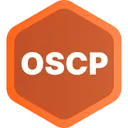This is the first non-technical post I’ve written on the blog, and I’m going to talk about my impressions of the OSEP certification offered by Offensive Security. I will tell you how the labs were, the exam process and I will leave you with some tips that were at least useful for me to face the exam.
In summary, my experience with the certification has been very good, I learnt the concepts of AV evasion and AD exploitation and put them into practice in a very real environment; all the tactics and techniques used could be used in a Red Team scenario.
Labs
There is ~one lab per chapter, and the labs are a good way to practise the theory in the book. The labs also contain six different challenges to put you in an exam perspective, I would recommend doing all of them before the final exam. If you can do them on your own, without any help, you will probably have a chance of passing the exam. The exam is a challenge that cannot be passed by following a guide, so don’t be overconfident.
The exam is much harder than the OSCP, making the OSCP a more than necessary requirement in my opinion.
Exam (~56h)
I started the exam on the 21st of July at 10:00am, I was there an hour before to make sure that the Kali VM was working properly and to test the two internet connections.
In my case, my main Internet line goes down during the day, so it was essential to have a mobile phone that offered a constant access point.
During the first morning I was able to get 3 flags (12:39, 13:03, 13:55), one of them I didn’t expect to get so fast and it motivated me a lot. I stopped for lunch at 16:00 and ate in front of the computer. At 18:24 I already had 4 flags.
I was stuck on one for a long time until ~20:00, so I took a shower and went for a walk with my girlfriend, this time of disconnection helped me a lot because when I arrived at ~21:00 I saw everything with a new vision. I stopped for dinner and at ~21:30 and I went back to face the flag I had been stuck on for so long at ~22:15. At 3:23 I got the flag and at 3:45 I had got another one, I documented everything and went to bed at ~5:00, with 6 flags already. There were only 4 more to go.
The second day I started at ~8:00, I hadn’t slept much (~3h). During the second morning I got 3 more flags, 9 in total (10:50, 10:58, 11:42), only 1 more to go. I was hoping to get it before lunch, but no way. Finally I didn’t eat that day and got the 10th flag at 19:18 in the afternoon, at 19:52 I had the 11th flag after ~33h.
After that, I had a good rest on the couch and a quiet dinner before checking that I had everything I needed for the next day’s report.
On the third and last day, I got up around 10am and started writing the report, as I had already written down the screenshots and the procedure for each machine, I just needed to make it nice and detailed.
| Time | Event | Flags |
|--------|--------------------------------------------------------|-------|
| 10:00 | Started the exam | 0 |
| 12:39 | Got 1st flag | 1 |
| 13:03 | Got 2nd flag | 2 |
| 13:55 | Got 3rd flag | 3 |
| 16:00 | Stopped for lunch | |
| 18:24 | Got 4th flag | 4 |
| 20:00 | Took a shower and went for a walk | |
| 21:30 | Stopped for dinner | |
| 22:30 | Resumed work on the stuck flag | |
| 3:23 | Got 5th flag | 5 |
| 3:45 | Got 6th flag | 6 |
| 5:00 | Went to bed | |
| 8:00 | Started the second day | |
| 10:50 | Got 7th flag | 7 |
| 10:58 | Got 8th flag | 8 |
| 11:42 | Got 9th flag | 9 |
| 19:18 | Got 10th flag | 10 |
| 19:52 | Got 11th flag | 11 |
| 10:00 | Started the report on the third day | 11 |
| 18:00 | Finished the exam | 11 |
I received my note 9 days later (including weekend).
Tips
- If you are stuck on a flag, or think you are on the right path but have been stuck for a long time, go outside, take a walk, play with your dog, take a shower… and come back with fresh ideas.
- In my exam case, there were two ways to complete the exam, if you get stuck in one for too long, go to the other.
- There are two days for the practical part and one day for the report, so plan your sleep/meal times.
- Get up from the computer, my back hurts a lot from sitting for so long, stretch your legs.
- Take notes and screenshots of each step. Personally, I used Obsidian and Flameshot.
- Make a write-up of each challenge and save the commands for a quick search.
- Don’t be afraid to restart the environment, but make sure you have documented how to get access.
- Use common ports on reverse shells, such as ports 53, 80, 443. Other traffic may be blocked.
- Test the reverse shells or exploits with simple pings or HTTP requests, the AV may delete the binary/webshell/etc. If it works, try to
upxthe binary or adding some cipher to bypass the AV (Caesar and XOR ciphers, time delays). - If you are using a socks proxy to access another network, use chisel and make sure the connection is stable.
auxiliary/server/socks_proxyfrom Metasploit it’s too slow. - Have the tools shown in the book pre-compiled and test them in the challenges.
- Coffee.




